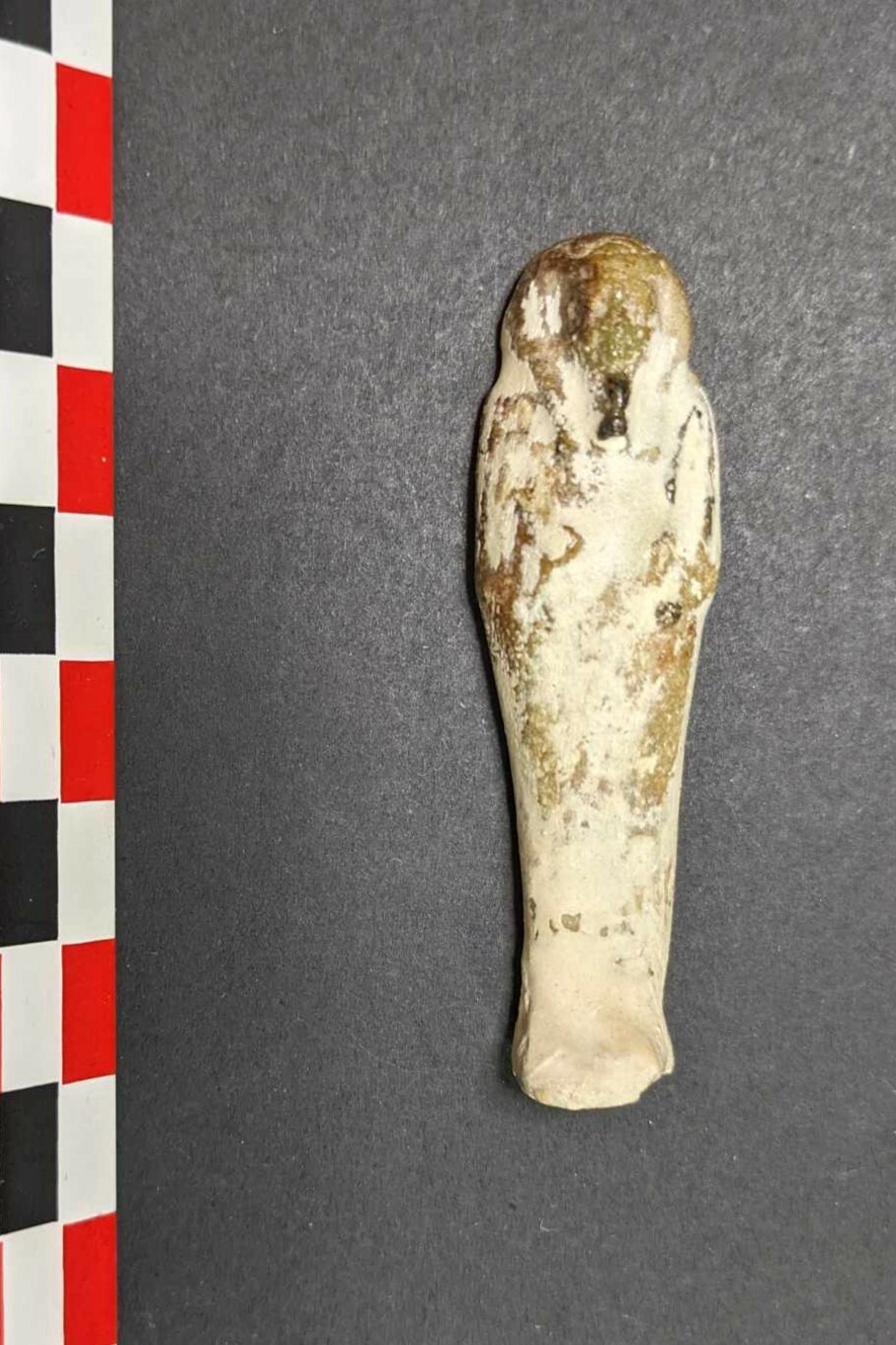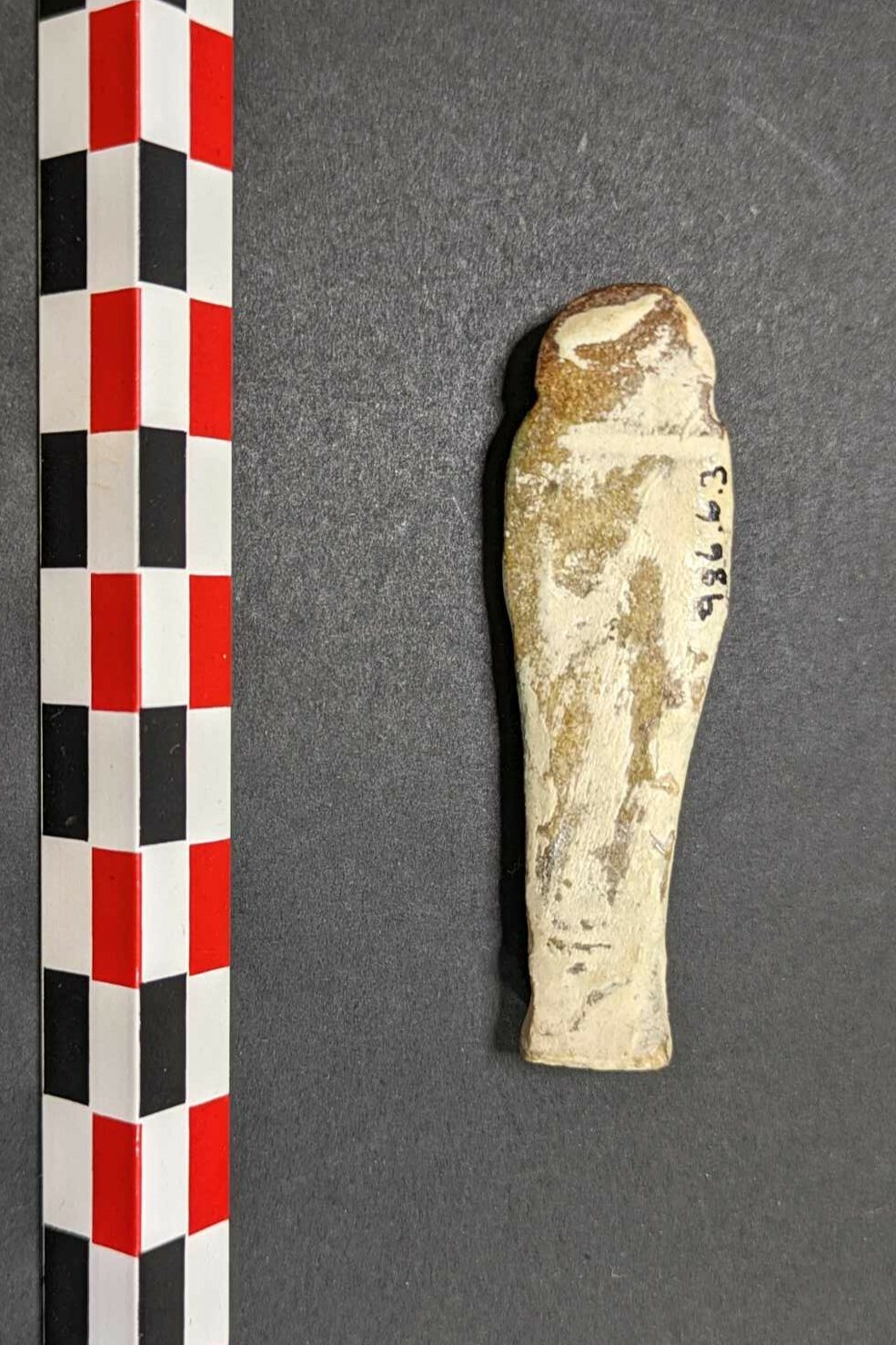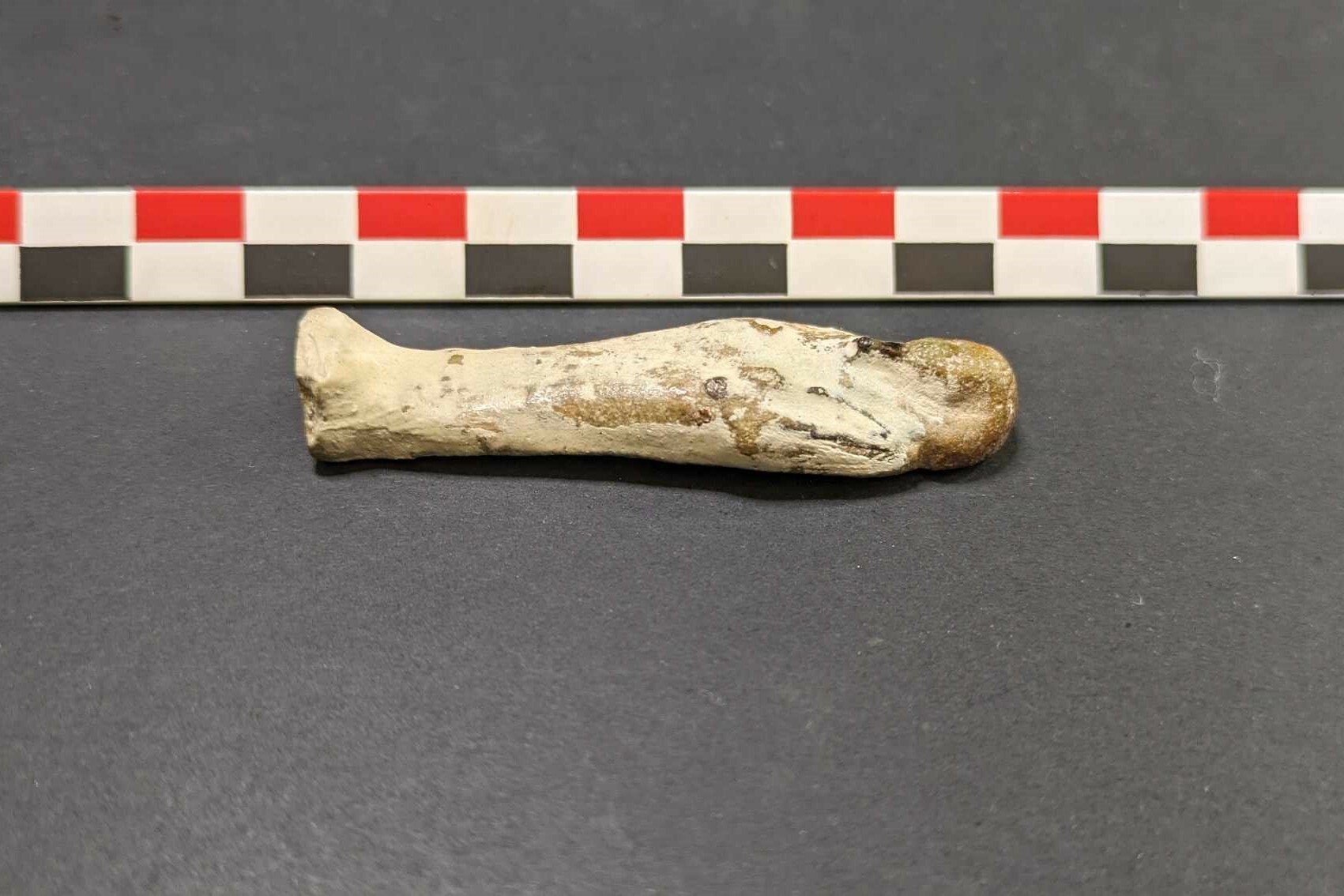Ushabti
Ushabti
Egyptian; Late Period; possibly Saite period, 664-525 BCE
Ushabti, also known as shawabti or shabti, are figurines in the form of mummies often made of wood, stone, faience, or clay. They were placed in tombs alongside the body, as it was believed that they would perform agricultural work in the afterlife on behalf of the deceased. This ushabti mimics the Pharaonic imagery of sarcophagi, suggesting religious value and importance.
-
Oushabti
Égyptien; Basse Époque, possiblement la période Saïte, 664-322 AEC
Les oushabti, également appelés shawabti ou shabti, sont des figurines en forme de momies souvent fabriquées en bois, en pierre, en faïence ou en argile. Elles étaient placées dans les tombes à côté du corps, car on croyait qu'elles effectueraient des travaux agricoles dans l'au-delà au nom du défunt. Cet ushabti imite l'imagerie pharaonique des sarcophages, suggérant une valeur et une importance religieuses.



